| Showing technology is hard but there is this model of a glass furnace (with odd reflections from the glass). | 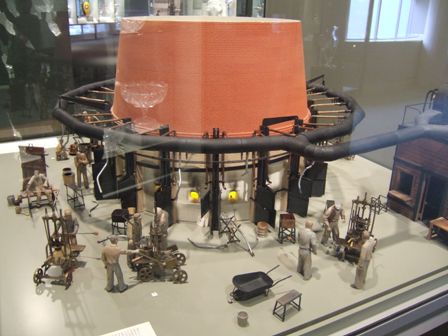 |
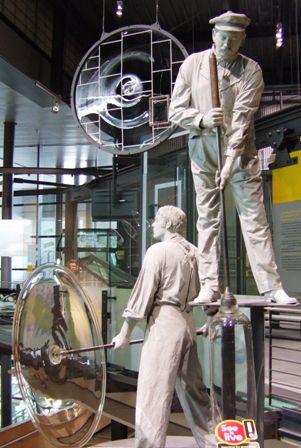 |
Also scattered around are some statues of glassworkers as with these who are
making window glass before the days of float glass. Development of that
process took seven years and resulted in over 100,000 tons of scrap glass. |
| There are several microscopes, telescopes and this
periscope with views over the town of Corning. The lenses for such devices
are very complex. | 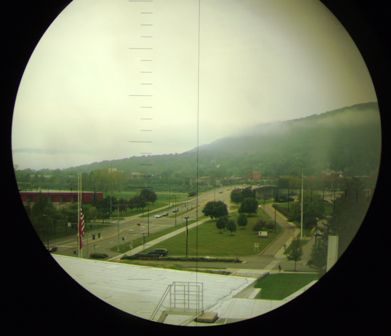 |
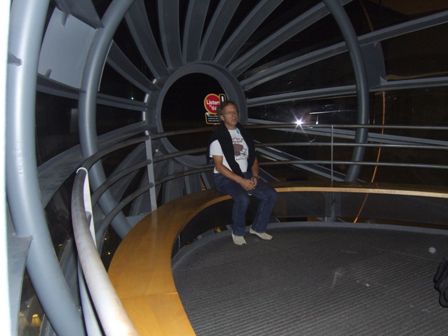 |
This is one end of a chamber in which two people sit at opposite ends and
hold a whispered conversation. The secret is the shape of the chamber which
acts as a reflector of the sound. |
| These samples of material are used to colour glass and
to make it. | 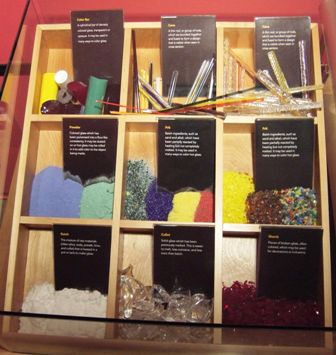 |
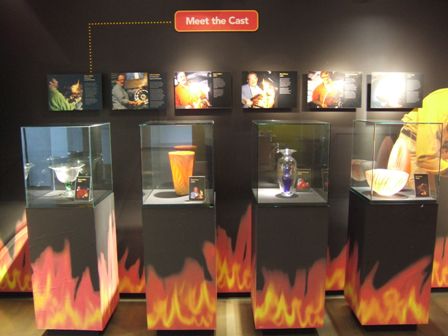 |
There are several exhibitions of glass working. This display shows some of
the craftsmen and samples of their work. Most have been doing displays for
10-15 years, since the museum opened. |
| The craftsman collects a globule of glass and rotates
it to give it an even shape. He then reheats it and repeats the process. | 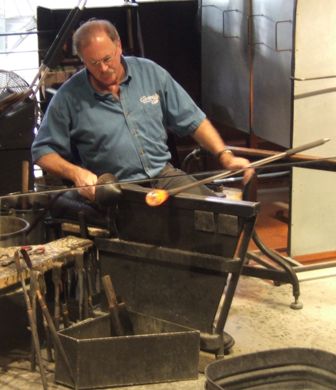 |
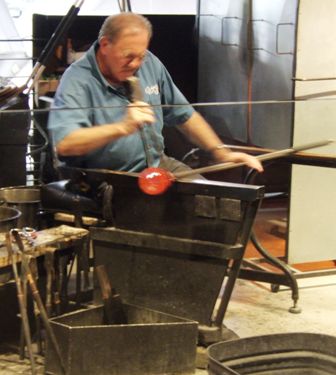 |
He may blow down his tube to create an air bubble inside or shape the
outside of the form as shown here. |
| A bit more air to increase the size. He has only a few
seconds of working time between each reheating. | 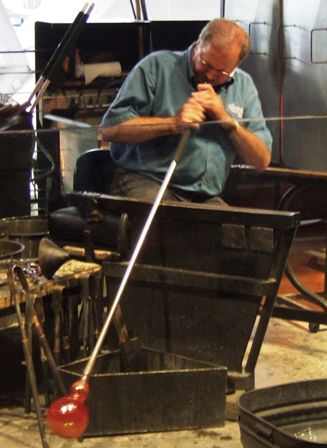 |
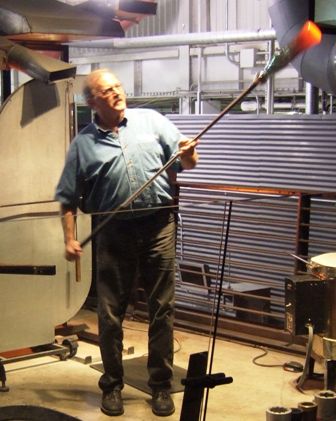 |
He may use a wooden tool to flatten the end or swing it to lengthen the stem
as he is doing here. |
| His colleague (and the narrator) adds another pole to
the bottom of the glass by sticking it with a bit more molten glass. This
enables the craftsman to cut his tube off and begin work on forming a vase. | 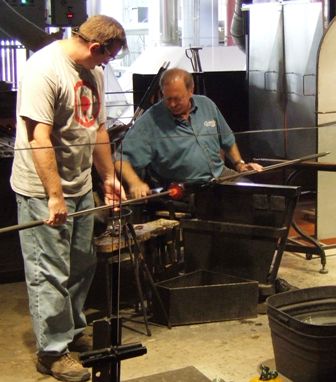 |
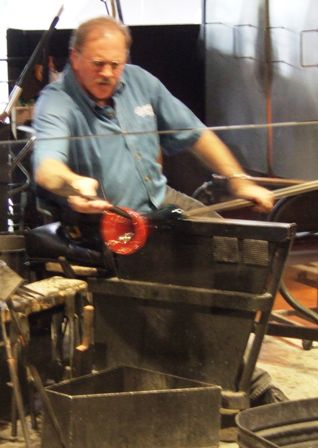 |
He opens out the neck of the vase using a variety of hardwood tools. The
vase is now attached by its bottom. He keeps the vase constantly turning to
keep its shape even. |
| Opening it out still further requires a careful and
even touch as the glass is getting progressively thinner. | 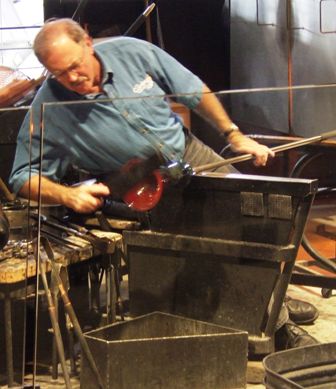 |
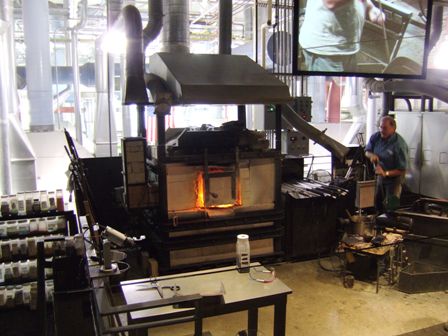 |
This is the main glass furnace of the display area. There is another furnace
behind him which is used for reheating. The glass vase has now gone into yet
another kiln to anneal and cool slowly so that the stresses are evened out
or else it would shatter as it cooled. |
| Downstairs in the Steuben factory is a modern
production kiln although most of the items made here are individual pieces. | 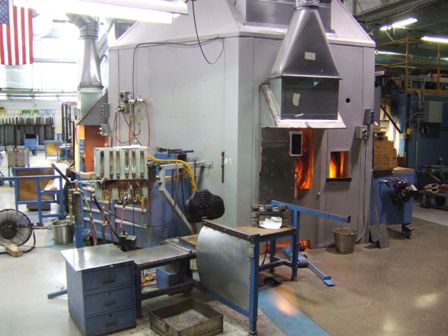 |
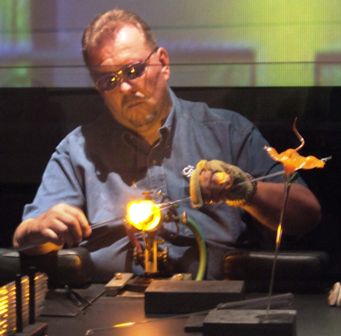 |
Another display, this time of flame-working as he makes a flower. |
| The work is more delicate and he works quickly. There
is real artistry in creating the colours and the shapes while using a
material which collapses easily while molten. | 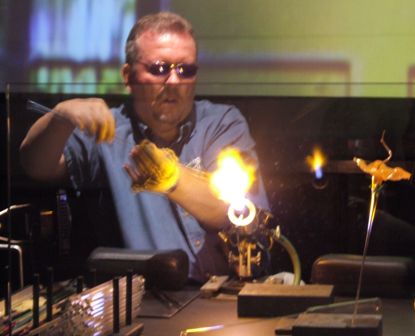 |
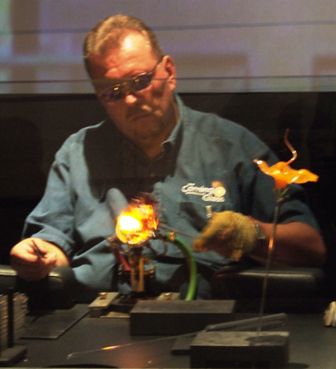 |
He uses different flames to get different temperatures for the work he is
doing at any point. |
| And this is the finished product which will go into an
annealing kiln to even the stresses as it cools. | 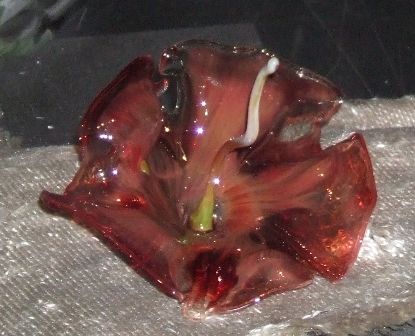 |
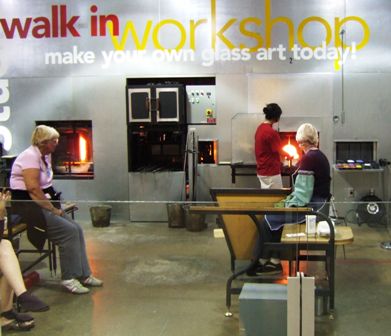 |
They have a workshop where you can go and make your own flower or
paperweight. Jan is waiting while the assistant collects the glass while
Dawn watches and waits her turn. |
| The idea is to pull out the edges with pincers as she
turn the glass trying to get it all done before the glass cools and becomes
no longer malleable. It is harder than it looks. | 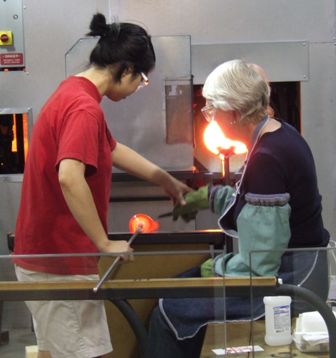 |
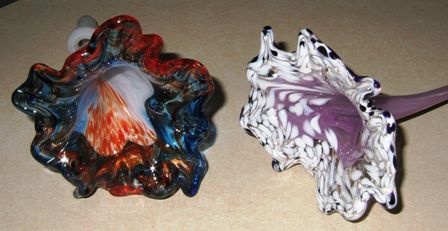 |
And the end result, Jan's and Dawn's flowers. Now to get them home in one
piece! |
|